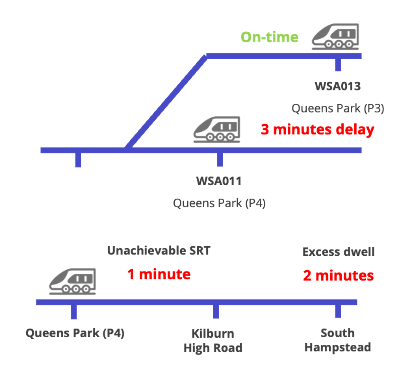Knowing this, Asset Manager can review maintenance schedules to optimise performance and
Routine asset maintenance is generally time-based. E.g. a type of asset is maintained every so often regardless of usage, as per determined by the manufacturer and safety regulations.
Difficulty: Hard
Difficulty: Hard
For a specific location the method can be developed relatively quickly, depending on the complexity of the location. Once set up, insight regarding conflicts can be generated and presented to interested stakeholders for action.
Data: Mostly Available
In most cases, JNCTION has obtained and processed the required data to solve this problem. With further data sources we could be able to assign the cause of delays more accurately.
Scalability: Medium
The methodology could be replicated across the network easily but would need manual testing and adjustments for location specific nuances.
Maturity: Low
JNCTION has completed successful trials in specific locations, producing static conflict reports, but have not scaled to more complex areas.
The Long Read
Why does answering this question help?
How do we answer this question?
Using train movement data, we attempt to understand each service’s journey up until the point the conflict occurred.
For each service involved in the conflict we answer:
- How late (if at all) was the service?
- How late could the service have been without causing a conflict?
- For a late service, at which locations did it incur delay and by how much?
- For each of those locations, what was the primary cause of the delay?
Determining the cause of delay will be a complex process. For example, we may identify that two minutes of delay were incurred at station X. We may be able to say confidently that this delay caused the conflict but it will then take further analysis to fully understand the reason for the initial dwell delay. This can be incrementally improved through more advanced algorithms and other data sources.

Why does answering this question help?
